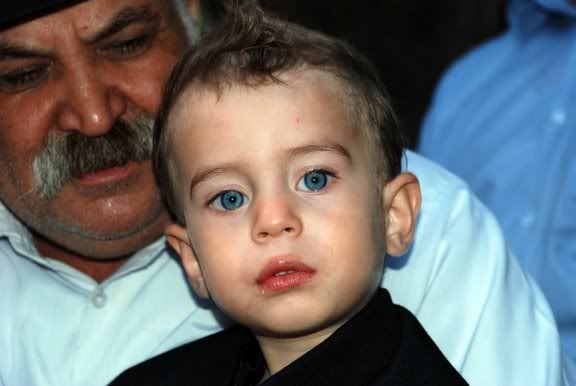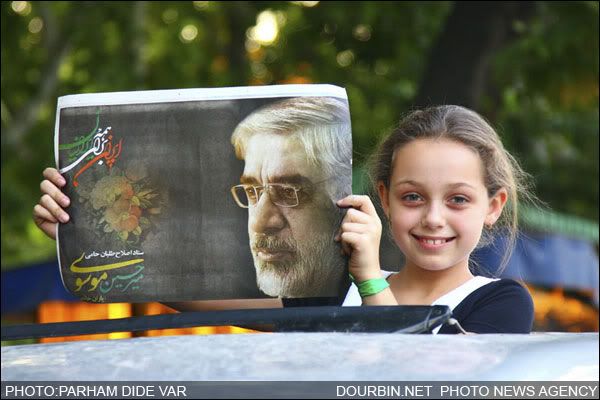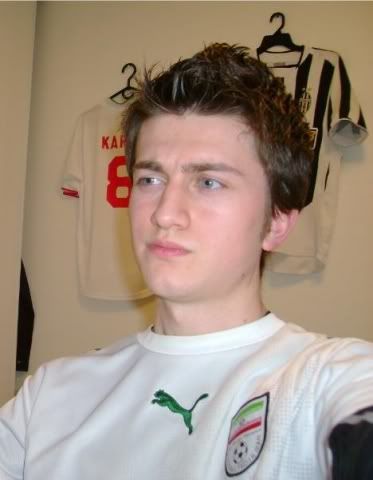Cirdan
Master Knight

I'm flattered, but it seems I am late answering summons. My demonic powers must be waning. Probably something to do with the removal of my bat-wings so I can fit in with humans.Merlkir said:Someone like Círdan would explain it better, but I'll give it a shot.
All the evidence points to the Scythians being Indo-European, more exactly Indo-Iranian. As an aside, it doesn't really matter whether evidence is found that there once was an Indo-European tribe; all living males (and females, although this isn't directly genetically traceable) are descended from a single man (Y-chromosomal "Adam", although this is a stupid name, among other reasons because he was a very, very distant descendant of the mitochondrial "Eve") who is thought to have lived about 60,000 years ago. In this time period the descendants of this man not only evolved highly distinct cultures, but physically differentiated themselves to give rise to the full spectrum of contemporary humanity. Redheads, blonde blue-eyed Norwegians, gracile black-skinned Nilotes, stocky Bantus, Asiatics of all descriptions, all descend, not only from a single tribe or clan, but from a single man. If you go back far enough, everyone stems from the same group. Given the similarities in culture and language--the Indo-European, or Aryan, theory, originated when linguists discovered that many languages were related to Sanskrit--it seems blindingly obvious that at some point in the differentiation of human cultures, the ancestors of the peoples now described as Indo-European were in the same group while the ancestors of the Turco-Mongolian peoples were in another group. Which group turned left and which turned right is rather irrelevant.
To return to the Scythians, in the narrowest sense the word designates a group that inhabitated the Pontic steppes, in current day Russian and the Ukraine, between circa 700BCE and 100CE, prior to which they lived further east, near the present Russo-Mongolian border (the earliest Scythian finds are in the present-day Russian republic of Tyva, which border on Mongolia and East Turkestan). In the wider sense, Scythian designates a group of closely related Eurasian nomadic tribes, including the Scythians 'proper', the Sarmatians, the Massagetai and the Sakae (as an aside, Saka is the Persian term for the wider Scythian group, but was adopted by the Greeks and Romans only in reference to the Easternmost branches thereof), and possibly the Kimmerians. In a now defunct sense, the word was used by the Byzantines to designate Barbarian horsearchers. They could have said "Barbaroi Hippotoxotai", but "Skythikoi" was shorter. Earlier, the classical Greeks also sometimes used the term Scythian in a similar sense; Xenophon in a couple of instances uses "Skythikoi" to mean archers.
The difference between the various sub-groups of the Scythians in the wider sense appear to be fairly minor from a cultural and linguistic point of view; the replacement of the Scythians by the Sarmatians on the Pontic steppe appears to be mainly political, one tribal confederation supplanting another. For what he's worth, Herodotos makes it seem like the term Scythians (Skythikoi) derived from the name of the chief tribe of the confederation, at least in Herodotos' time. The Greco-Scythians were an offshoot of this first confederation, formed by Hellenised, sedentary Scythians towards the end of the Scythian confederation. The Greco-Scythians built cities and practised Greek-influenced crafts; they tried to bring the Greek colonies of the Black Sea into their kingdom. The Kimmerians were apparently an earlier tribe or confederation of similar peoples, which was replaced by the Scythians 'proper', however, there is little concrete evidence regarding the Kimmerian culture--a few given names, which appear to be Iranian, and a single incription in which Kimmerian is used as a Babylonian synonym of the Persian Saka (i.e. Scythian). For the Scythians themselves there is much more evidence, however, they are not exactly known for their extensive litterature so there is some controversy left. All (non-Turkish) scholars agree their language was Indo-European, but there is some debate about whether it was Iranian (this has the majority's preference) or Indo-Aryan, based on given names and a few common nouns. Most of the knowledge we have of them comes from their burials, which feature very Iranian-looking art at first, before showing a distinct Hellenic influence (or so claim the people who can distinguish artistic styles at a glance). In the earlier graves, it is quite common for women to be buried with their weapons, indicating that, at least among the aristocracy, it was normal for women to particpate in war. Later (IIRC 3rd century BCE) burials of female warriors become rare; this is associated with the sedentarisation of the Scythians and the development of agriculture, cities and more advanced crafts. Some of the Scythian tombs have preserved fragments of blonde and red hair, which seems hard to reconcile with a Turkic population.
The Sarmatians follow a similar pattern, coming in later and replacing the Scythians as the nomadic masters of the Pontic and Caspian steppes. They are rather better known as they fought against, traded with, and occasionally provided mercenaries to the Romans. There are no accounts of them showing Turkic physical features, and their language appears definitely Iranian. The legend of the difference between the Scythians and Sarmatians being down to the Amazons might stem from the coexistence at one time of Scythians, more advanced along the path of sedentary civilisation with clearly distinguished gender roles, and of Sarmatians with more primitive nomadic customs, including indistinct gender roles. Incidentally, the Paziryk excavations, which I believe have previously been mentioned, are attributed to the Sarmatians.





























